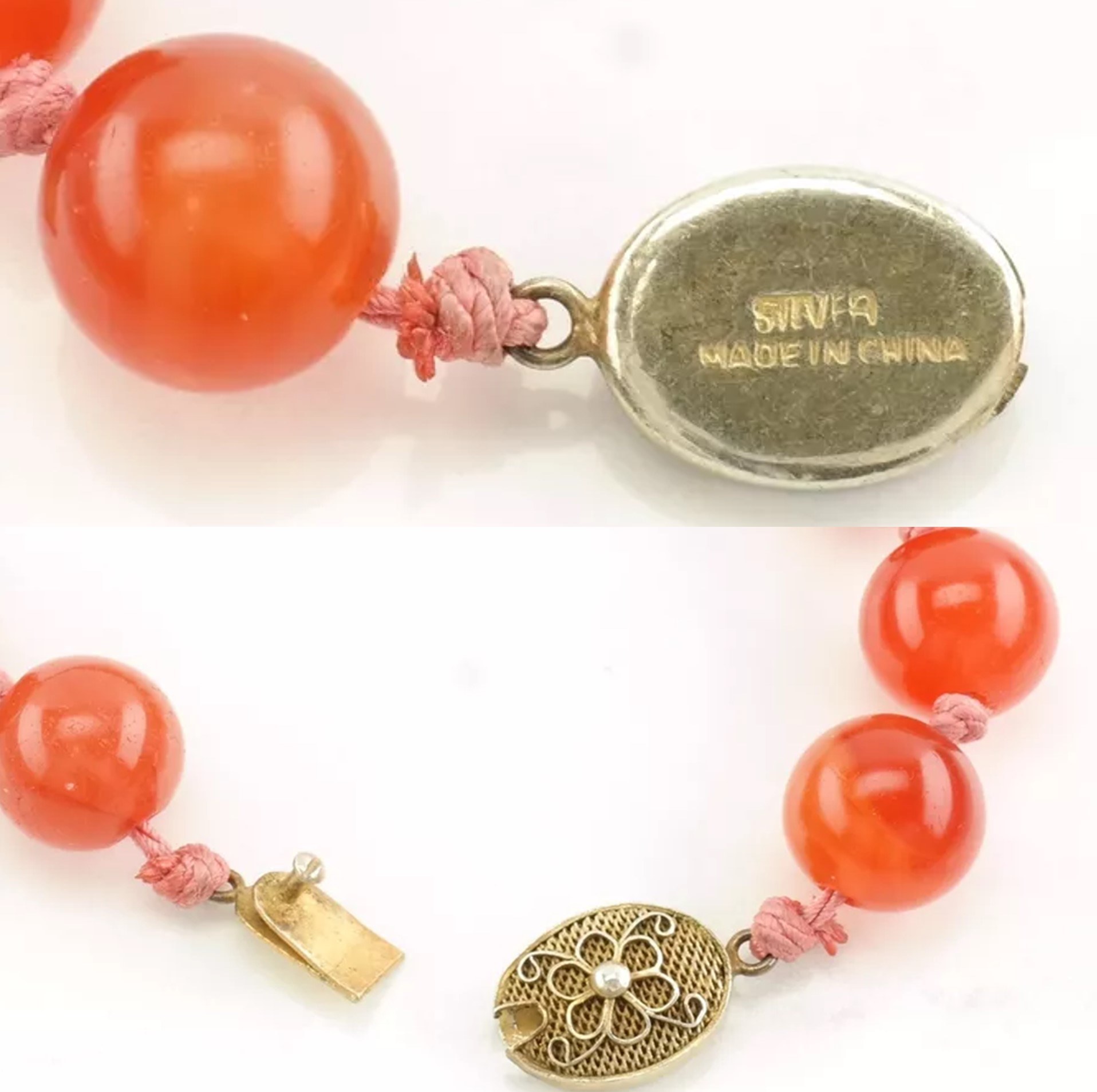| Clasps on Chinese cloisonne necklaces | |||||
| Post Reply | Edit | Forum | |||
06/01/2024, 10:36:39
I have a number of examples acquired in the 15 years since, and have noticed a particular clasp that seems to cluster around assemblages that are better crafter, thus likely older?
In the late 1950s-60s a craft factory center was established in Beijing to make it easy for foreign purchasers to do one-stop shopping, foreign exchange being desperately sought. The center included the newly-organized Beijing Enamel Factory, jade-ivory-cinnabar carving workshops, and a filigree workshop. Could be the filigree workshop was the source of these clasps, but that's just a wild guess.
At any rate, what appear to be early silver clasps have a rounded oval base, and rings soldered to the box and the tongue. They're usually stamped SILVER MADE IN CHINA, sometimes with what looks like the letter "A" atop the other two stamps. The top filigree design often (but now always) features a 6-petal daisy.
What appear to be later clasps have a cut-out or stamped flat base with ring flanges, atop of which are soldered rings - a double layer, persumably to either strengthen the clasp rings or to make productionn manufacture easier/cheaper. Sometimes stamped SILVER MADE IN CHINA, but more often just SILVER. The top filigree design is often (again, but not always) a floral sprig.
Two similar carnelian + cloisonne necklaces seem to indicate the difference in quality. The longer necklace features graduated carnelian and 15mm cloisonne beads and designs that feature birds, flowers, peaches, butterflies.
The shorter necklace has 12mm beads closer in size to the carnelian beads, with simpler floral and butterfly designs.
Appears to me to be a best vs good situation? 1950s-60s vs 1960s-70s? Thoughts?


All rights reserved by Bead Collector Network and its users